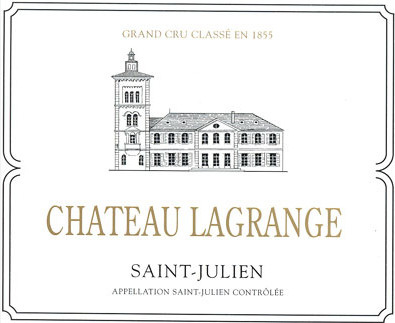
Château Lagrange
33250 Saint-Julien-Beychevelle
Tél. : +33 (0)5 56 73 38 38
A sumptuous, architecturally imposing property, Château Lagrange became a Japanese-flagged estate in 1983 with the Japanese family group, Suntory, a world leader in beverages and spirits. Suntory undertook a thorough renovation and restructuring of the property and its 118-hectare vineyard. Long under the direction of Marcel Ducasse, alongside Kenji Suzuta, it is now Matthieu Bordes (Marcel Ducasse's former second-in-command) and Keiichi Shiina who are pursuing a policy of perpetual pursuit of excellence, shaping wines that are both powerful and elegant, all with the utmost respect for the environment, reflected in a reduction in the carbon footprint of this highly reputed cru.
The land on which Château Lagrange was founded in the commune of Saint-Julien-Beychevelle is mentioned as early as the 13th century. Wine production then began in the Middle Ages, although it was still a more or less important and priority activity. The estate known as “Domaine de Lagrange” was inaugurated much later, in the 17th century, from the union of two terroirs to the east and west. The estate's name was inherited from the noble house of Lagrange Monteil, which can be traced back to the 16th century. It seems that the first significant development of the vineyard was mainly due to Baron de Branne de Cours in the 18th century, more precisely from 1712 to 1746. At the time, this family also owned Château Mouton-Rothschild. Famous owners include Jean-Valère Cabarrus, a shipowner and merchant from Bordeaux, who expanded the vineyard considerably and had the Tuscan Tower built against the architecture of today's château; then François Cabarrus (Joseph Bonaparte's Minister of Finance), then John Lewis Brown, a wealthy merchant of Scottish origin who, in the mid-18th century, sold the estate in 1842 to Count Tanneguy Duchâtel, Minister of the Interior under Louis-Philippe (the Count did much to improve the quality of the wines by modernizing the château and technical installations, not forgetting to expand the vineyard). Under his impetus, and thanks to Bernard Théodore Galos (his steward who also managed Mouton-Rothschild), Château Lagrange was recognized as a 3rd Grand Cru Classé in 1855. At that time, Lagrange became a meeting place for the bourgeoisie and artists.
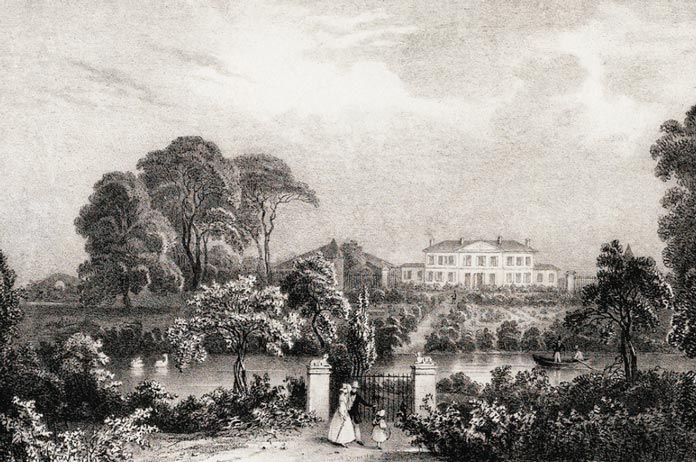
But after the death of Comte Duchâtel in 1867, the estate declined, despite the hard work of the heiress countess and her two sons. The arrival of phylloxera, economic crises and wars, including the “Great War”, all added to the difficulties. It was then that the Cendoya family (Basques of Spanish origin) took over ownership of the estate in 1925, but they were to suffer through the economic slump of the 1929 world crisis, as well as the Second World War. Barely able to emerge from these major events, and faced with financial difficulties, the family - who weren't exactly great managers and whose family members, it is said, didn't get on too well - were forced in the 1970s (at the height of the Bordeaux wine crisis) to gradually sell off parcels of the vineyard to neighboring estates (Château Gloria and Château Ducru-Beaucaillou). The estate then lost a very large part of its historic vineyard, which in the 19th century numbered no less than 300 hectares (including vines and parkland), compared with 56 hectares after the successive resales of the plots. And “as one difficulty never comes alone”, the prestige of Château Lagrange wine inevitably declined, as did the building, which was left, to say the least, somewhat abandoned. Some would say “a real mess”.
Château Lagrange was a shadow of its former self in the late 70s and early 80s. But the future of the 3rd Grand Cru Classé was about to brighten up once again, thanks to new investors who, for once when it comes to acquiring Bordeaux estates, came from the land of the rising sun. Since the 17th century, foreign investment in Bordeaux has been dominated by investors from Northern Europe (most of whom were wine merchants before going into production), the United Kingdom, Belgium, the United States, then China from the 2010s onwards (with no fewer than 200 properties bought by the Chinese), this time the Japanese in the Bordeaux vineyards is unprecedented, especially in the 80s and even today, since there are only two properties entirely owned by Japanese: Château Lagrange in Saint-Julien and Osamu Uchida's Domaine Uchida in Pauillac! A little later, Suntory also became co-owner of another Saint-Julien Cru Classé en 1855: Château Beychevelle, owned since 2011 in equal shares by the Castel Group and Suntory, via the Grands Millésimes de France company.

But in 1983, the Japanese beverage group Suntory, Japan's leading distributor of alcoholic beverages (Suntory was founded in 1899 and is Japan's oldest alcohol manufacturing and distribution company), bought Château Lagrange from the Cendoya family for 54 million francs at the time (around 8 million euros). For the record, it was Michel Delon, owner of Château Léoville-Las-Cases (“Super Second” Grand Cru Classé in 1855 in Saint-Julien), who guided Keizo Saji (President of the Suntory Group) and who represents his family (owners of the Suntory Group) in the purchase of the property. He is said to have always loved Left Bank wines and Bordeaux. Michel Delon oversaw the various stages of the transaction and then the recruitment of a talented technical director, Marcel Ducasse, who took up his post in March 1984.
Suntory felt that the remaining 54 hectares were too small at the time of purchase, so the group quickly undertook major works and investments (the equivalent of five times the cost of acquiring the classified growth), starting with the cellars, winery sheds, offices and château, all of which were renovated as early as 1986. The question of increasing the size of the vineyard also quickly arose. Suntory therefore invested considerable financial resources in restructuring the plots, planting no less than 60 hectares in just two years. This shows the Japanese group's determination to stake its hopes on Lagrange's future by restoring its reputation, while at the same time seeking to recoup its investment without too much delay. As a reminder, the Cru Classé now boasts 117 hectares of vines, which is close to the surface area the château once enjoyed.
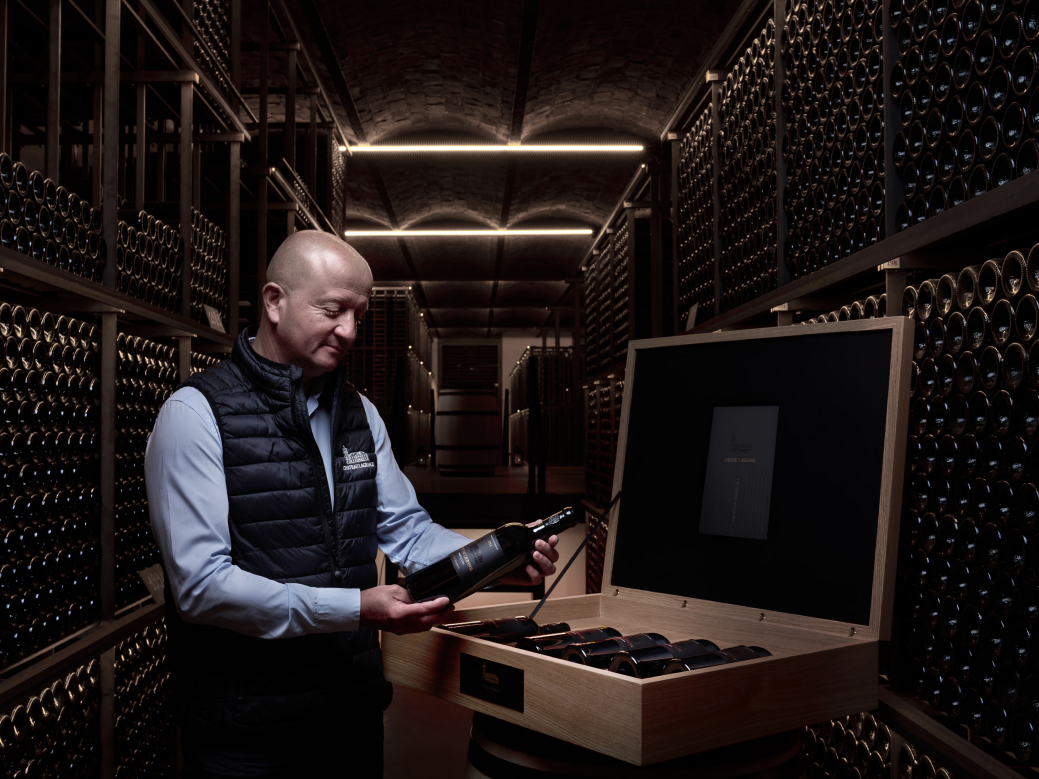
All these projects are coordinated by Kenji Suzuta (General Manager) and Marcel Ducasse, (Technical Director). This trained oenologist, in charge of managing the estate, is assisted by the famous and highly esteemed consultant oenologist of the time, the great professor Emile Peynaud. Marcel Ducasse was joined in 2007 by Bruno Eynard, charged with assisting him in the quest for excellence that the Japanese owners had set themselves, with the help of consultant oenologists Jacques Boissenot, and later his son Eric Boissenot. In 2008, Marcel Ducasse wished to “hand over the reins”, and his second-in-command, Bruno Eynard, took over until 2013, when Matthieu Bordes was appointed Technical Director, alongside Keiichi Shiina (new General Manager). The “Bordes” era is also marked by an accentuation of environmental issues, already begun by his predecessors, with in particular a reduction in carbon footprint. Since the 2017 vintage, Lagrange has been part of an HVE (High Environmental Value) environmental initiative.
The 117 hectares - including 4 hectares of Sauvignon (60%), Sémillon (30%) and Muscadelle (10%) devoted to the production of the dry white “Les Arums de Lagrange”, launched with the 1996 vintage - are constantly monitored and managed on a “parcel-by-parcel” basis. So, in order to isolate certain parcels and achieve even more precise blends, capable of retranscribing the nuances and different personalities of each soil and subsoil configuration throughout the vineyard (gravel is mixed with sand and ferruginous clay), the vat room has had to adapt to meet this DNA requirement. The installation of smaller vats - 102 vats, corresponding to the number of plots in the vineyard - should enable greater control over the expression of the grape variety, which is essentially made up of a variety of profiles and personalities. The two north-south facing croups of Günzian gravel (the nerve center of the Lagrange vineyard) are planted with 67% Cabernet Sauvignon, 28% Merlot and 5% Petit Verdot. In this respect, Lagrange is undoubtedly one of the few, if not the only Médoc estate to grow so much Petit Verdot in a single block, i.e., on 7 hectares. Admittedly, this grape variety is so complicated to harvest (its picking window of 3 to 4 days after ripening is considered the shortest and most technical) that one wonders whether Suntory doesn't have a taste for risk (7 hectares all the same!). But having so much of it is a priceless treasure: Petit Verdot accentuates the personality of the Grand Vin with its very spicy aromatic profile.
The vines are worked with the sole aim of obtaining grapes of absolute quality and great richness, while limiting yields (pruning, green harvesting, planting density and choice of clones). With an average age of the vineyard of 30 years, the vines were replanted as early as 1984, and have long been suitable for inclusion in the Grand Vin blend, bringing density and richness to the red wines. Suntory's constant investment has enabled Lagrange to regain its former lustre and restore its reputation: a result made possible by a rational and realistic vision of objectives and serious management of the estate. This 3rd Grand Cru Classé de 1855 is certainly one of the Saint-Julien appellation's most consistent and reliable performers. The proof is in the quality of its wines, even in the most technical vintages (short years).
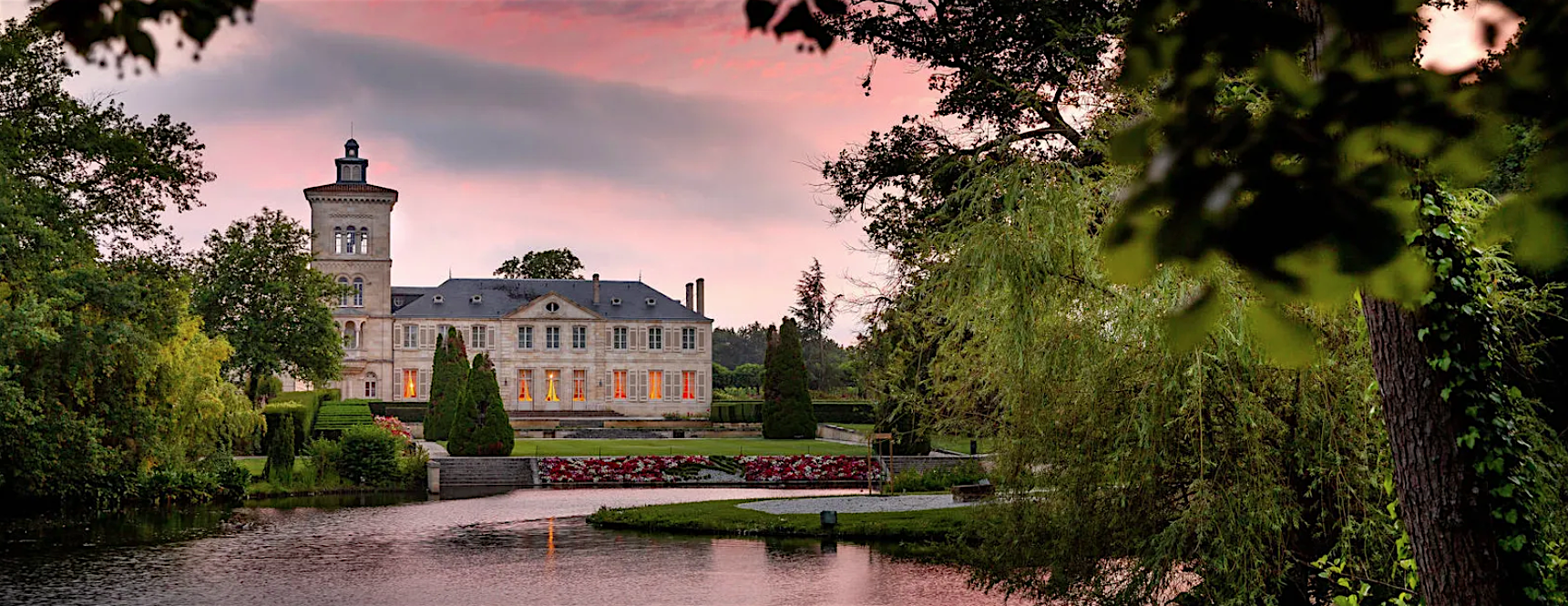
Lagrange's 117 hectares enable it to produce around 300,000 bottles of its first wine, Château Lagrange, and 400,000 bottles of its second wine, Les Fiefs de Lagrange. Les Fiefs de Lagrange, a wine long esteemed for the pleasure it gives us when we drink it, was launched with the 1983 harvest, as soon as Suntory acquired Château Lagrange. The second wine made it possible to make drastic selections when blending batches, to achieve excellence in the Grand Vin; a grand vin that has displayed remarkable consistency since the 1986 vintage. In 1996, the estate also launched its dry white Les Arums de Lagrange in the Bordeaux dry white appellation. To this day, it remains one of the Médoc's most popular dry white wines.

In this vintage with a hot, dry summer and record sunshine, the 2019 harvest at Lagrange remains the longest on record, with shifts in phenolic and technological ripeness for Merlot and Cabernet Sauvignon. This led the teams not to go too fast to ensure perfectly ripe grapes. But the result is worthy of the name: very rich grapes (surely the richest since 1983, when Suntory took over the estate). The blend is dominated by Cabernet Sauvignon (80%), Merlot 18% and Petit Verdot 2%. Lagrange 2019 is very dark in color. The nose is a concert of black fruits (mainly cherry and blackcurrant) with plenty of freshness and aromatic power. The palate is fruity and juicy, with a clean, straightforward attack, followed by a dense mid-palate of silky, very fine tannins. The whole is in the style of the great Saint-Julien wines, and its balance is sure to make this a long-keeping wine. A very fine Lagrange! This is undoubtedly one of the finest successes of this vintage in the appellation and in the Left Bank as a whole.
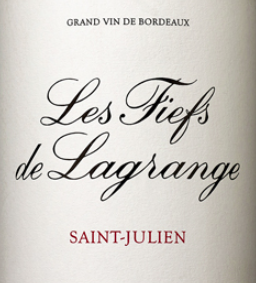
Château Lagrange created its second wine as early as 1983, when the property was taken over by the Japanese Suntory. Adopting, like all the other Médoc crus classés, the reflex of selections to refine the Grand Vin (“Première étiquette”), Lagrange then launched Les Fiefs de Lagrange. The 2018 vintage was exceptional in Bordeaux, as was its successor, the 2019. In a vintage with a hot, dry summer, one of the driest since 1996, Les Fiefs de Lagrange offers a great classicism in style and confirms the quality of this second wine, which never disappoints. Made from a blend of 51% Cabernet Sauvignon, 44% Merlot and 5% Petit Verdot, this second wine comes from vines with an average age of 28 years. The nose generously expresses notes of black fruits such as Morello cherry, with hints of cinnamon and other spices, the Petit Verdot at the origin of these spicy fragrances entering here at 5%, which is a lot but gives an interesting signature to this wine. On the palate, the wine displays a refined, elegant structure with well-integrated tannins. Harmonious and fruity, with a brilliant finish. A real success and already very enjoyable in its youth (although it could easily age for 10-15 years). The wine is probably more successful as a second wine than some first wines from certain Bordeaux estates.
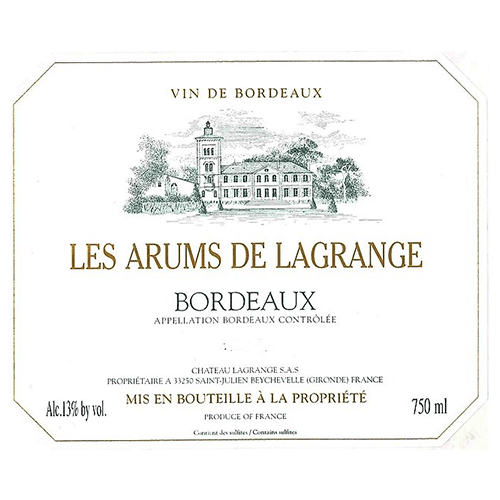
A blend of 85% Sauvignon Blanc and 15% Semillon, Arums de Lagrange 2023 sincerely offers candied citrus, lemon and then fresh grapefruit, mixed with notes of white flowers and hints of exotic fruit. Complex and rich. Fresh on the palate, with a lively, dynamic attack, followed by citrus retro-olfaction and a refreshing, saline finish. The wine is pure and bright. This dry white Bordeaux Blanc Sec was launched by Suntory with the 1996 vintage, much to the delight of lovers of dry white Bordeaux produced in the Médoc by Crus Classés.
1928-1929-1945-1947-1949-1953-1955-1959-1961-1970-1975-1981-1982-1985-1986-1988-1989-1990-1995-1998-2000-2005-2009-2010-2015-2016-2018-2019-2020-2022-2023

Website under construction
Available Soon